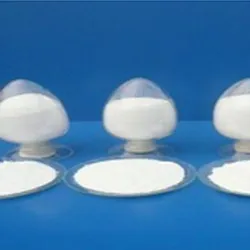
471 emulsifier
The Role of 471 Emulsifier in Food Technology
Emulsifiers play a pivotal role in the food industry, ensuring that food products maintain their desired texture, stability, and appearance. Among the various emulsifiers available, E471, commonly known as mono- and diglycerides of fatty acids, stands out due to its versatility and effectiveness. This article will explore the characteristics, applications, safety, and benefits of E471 in food technology.
Understanding E471
E471 is derived from the glycerol and fatty acids, which can be obtained from both natural and synthetic sources. It is a common food additive designated by the European food additive number. Mono- and diglycerides are formed when glycerol reacts with fatty acids, resulting in molecules that can interact with both water and fat. This property is crucial for emulsification, as it allows E471 to stabilize mixtures that would otherwise separate, such as oil and water.
The use of E471 is not limited to a single type of fatty acid; it can be sourced from various fats, including palm oil, soybean oil, and other vegetable oils. This diversity contributes to its widespread acceptance and utilization in different culinary applications.
Applications of E471
E471 is particularly prevalent in the production of baked goods, margarine, dairy products, and confectionery. In baked goods, it aids in improving texture, volume, and shelf life by ensuring a homogenized mixture that prevents the separation of ingredients. In margarine, E471 helps achieve a creamy consistency while enhancing spreadability.
In dairy products, such as ice cream and cheese, E471 serves to create a smooth mouthfeel and extends the product's stability during storage. Additionally, in the confectionery sector, it plays a vital role in chocolate production by preventing fat bloom, which is the white film that can develop on improperly tempered chocolate.
Moreover, E471 is also utilized in the production of sauces, dressings, and emulsified products. Its ability to bind oil and water allows for the creation of stable emulsions that enhance flavor and texture.
471 emulsifier

Safety and Regulations
The safety of food additives, including E471, is a topic of interest for consumers and regulatory bodies alike. E471 has been deemed safe for consumption by several food safety authorities, including the Food and Drug Administration (FDA) and the European Food Safety Authority (EFSA). Extensive studies have indicated that E471 does not pose significant health risks when consumed in regulated amounts.
Nevertheless, as with all food additives, it is essential for consumers to be aware of the quantity and frequency of their consumption. Some individuals may have sensitivities to specific sources of fatty acids, particularly if they are derived from allergens, such as soy or corn. Therefore, food products containing E471 are often required to label their sources to inform potential allergic reactions.
Benefits of Using E471
The inclusion of E471 in food products offers numerous benefits. Its emulsifying properties enhance the texture and stability of products, contributing to overall consumer satisfaction. Additionally, the use of E471 can extend the shelf life of food items, reducing waste and enhancing profitability for manufacturers.
Moreover, the production of E471 from various sources allows manufacturers to choose cost-effective options based on availability and consumer preference. Its ability to improve sensory attributes—such as texture, mouthfeel, and appearance—can significantly enhance the marketability of food products.
Conclusion
In conclusion, E471 (mono- and diglycerides of fatty acids) plays an essential role in modern food technology. Its versatility and effectiveness make it a favored emulsifier across various food categories. As consumers become increasingly aware of food additives and their functions, understanding the role of E471 can foster a deeper appreciation for the complexities involved in food production. While its safety is well established, awareness regarding its sources and effects on health is crucial for informed dietary choices. Ultimately, E471 illustrates the intricate balance between food science, safety, and consumer satisfaction within the food industry.
-
Why Glacial Acetic Acid Food Grade Is Essential in FlavorNewsMay.26,2025
-
Surging Export Growth of Food Additives in ChinaNewsMay.26,2025
-
How Ammonium Nitrate Fertilizer Boosts Crop YieldsNewsMay.26,2025
-
How 1,2,3-Benzotriazole Shields Plastics from UV DegradationNewsMay.26,2025
-
Cyanide in Gold Mining: Protecting People and the PlanetNewsMay.26,2025
-
Aluminum Hydroxide in Modern Sunscreen FormulationsNewsMay.26,2025
-
Understanding Synthetic Rubber OptionsNewsApr.27,2025
Hebei Tenger Chemical Technology Co., Ltd. focuses on the chemical industry and is committed to the export service of chemical raw materials.
-

view more DiethanolisopropanolamineIn the ever-growing field of chemical solutions, diethanolisopropanolamine (DEIPA) stands out as a versatile and important compound. Due to its unique chemical structure and properties, DEIPA is of interest to various industries including construction, personal care, and agriculture. -

view more TriisopropanolamineTriisopropanolamine (TIPA) alkanol amine substance, is a kind of alcohol amine compound with amino and alcohol hydroxyl, and because of its molecules contains both amino and hydroxyl. -

view more Tetramethyl Thiuram DisulfideTetramethyl thiuram disulfide, also known as TMTD, is a white to light-yellow powder with a distinct sulfur-like odor. It is soluble in organic solvents such as benzene, acetone, and ethyl acetate, making it highly versatile for use in different formulations. TMTD is known for its excellent vulcanization acceleration properties, which makes it a key ingredient in the production of rubber products. Additionally, it acts as an effective fungicide and bactericide, making it valuable in agricultural applications. Its high purity and stability ensure consistent performance, making it a preferred choice for manufacturers across various industries.











